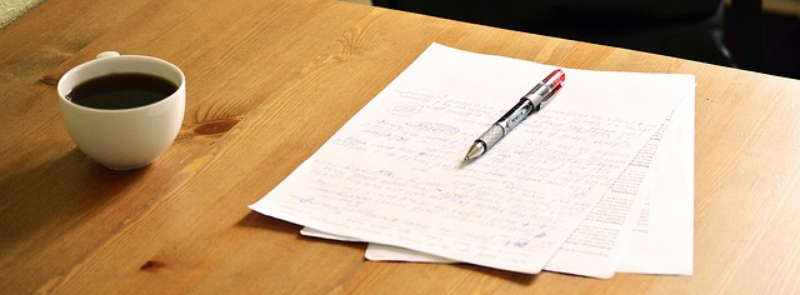
When It Occurs
Every March 8th
Official Website
Timeline
Days Passed (981)
# Hashtags
#NationalProofreadingDay #WritersThing
March 8th is observed annually as National Proofreading Day, a dedicated occasion to advocate for error-free writing. In the course of our writing endeavors, typos, grammar lapses, and spelling mistakes are commonplace, particularly when working swiftly. National Proofreading Day serves as a reminder to decelerate, carefully proofread our work, and repeat the process. For those fortunate enough to collaborate with an editor who diligently proofreads their work, this day provides an excellent opportunity to express gratitude for their unwavering commitment to maintaining error-free writing.
History and Origins of National Proofreading Day
-
Creation:
- National Proofreading Day was created by Judy Beaver in 2011. Judy, a professional proofreader, established the day in memory of her mother, Flo, who was known for her love of correcting mistakes in written content. Judy wanted to honor her mother’s attention to detail and emphasize the importance of proofreading to ensure that writing is clear, professional, and error-free.
-
Purpose:
- The primary purpose of National Proofreading Day is to encourage people to take a moment to review their written work before sending it out into the world. It’s a reminder that even small errors can undermine the credibility of a document or message, and that careful proofreading can help avoid these mistakes.
Significance of National Proofreading Day
National Proofreading Day holds significance for several reasons:
-
Promoting Accuracy in Writing:
- The day emphasizes the importance of accuracy in written communication. Proofreading helps catch spelling, grammar, punctuation, and formatting errors that could otherwise detract from the clarity and professionalism of the writing.
-
Encouraging Attention to Detail:
- National Proofreading Day encourages people to pay attention to the details in their writing. Whether it’s a typo, a misplaced comma, or an inconsistent font size, even small errors can impact the overall quality of a document.
-
Improving Communication:
- Effective communication relies on clear and error-free writing. Proofreading ensures that the message is conveyed accurately and that the reader can easily understand the content without being distracted by mistakes.
-
Professionalism:
- In professional settings, well-proofread documents reflect positively on the writer and the organization. National Proofreading Day reminds professionals that taking the time to proofread can enhance their credibility and reputation.
-
Educational Value:
- For students and educators, National Proofreading Day serves as a reminder of the importance of reviewing and revising written work. It encourages students to develop good proofreading habits that will benefit them throughout their academic and professional careers.
How to Celebrate National Proofreading Day
There are several ways to observe and celebrate National Proofreading Day, whether you’re an experienced writer, a student, or someone who simply values clear communication:
-
Proofread Your Own Work:
- Take time on National Proofreading Day to review and proofread your own writing. Whether it’s a report, an email, or a social media post, carefully check for errors and make necessary corrections before finalizing your work.
-
Learn Proofreading Techniques:
- Use the day as an opportunity to learn new proofreading techniques or brush up on your grammar and punctuation skills. There are many resources available online, including guides, tutorials, and quizzes, to help improve your proofreading abilities.
-
Help Others Proofread:
- Offer to proofread documents for friends, family, or colleagues. Providing a fresh pair of eyes can help catch errors that the original writer may have missed.
-
Hire a Professional Proofreader:
- If you have an important document or project, consider hiring a professional proofreader to ensure it is error-free. Professional proofreaders have the expertise to catch even the smallest mistakes and can provide valuable feedback.
-
Share Tips on Social Media:
- Share your favorite proofreading tips and tricks on social media. Use hashtags like #NationalProofreadingDay to connect with others who are celebrating the day and to promote the importance of careful proofreading.
-
Practice Proofreading Exercises:
- Engage in proofreading exercises to sharpen your skills. Many websites offer proofreading tests and challenges that allow you to practice identifying and correcting errors in written content.
-
Reflect on Common Mistakes:
- Take some time to reflect on common writing mistakes you or others frequently make. Create a checklist of things to watch out for in your own writing, such as homophone errors (e.g., their/there/they’re) or inconsistent formatting.
-
Attend a Workshop or Webinar:
- Participate in a proofreading workshop or webinar to learn from experts in the field. These sessions often cover advanced proofreading techniques, common pitfalls, and best practices for ensuring error-free writing.
Common Proofreading Tips and Techniques
-
Take a Break:
- After writing, take a break before proofreading. This allows you to return to your work with fresh eyes, making it easier to spot errors.
-
Read Aloud:
- Reading your work aloud can help you catch mistakes that you might overlook when reading silently. It also helps you assess the flow and clarity of your writing.
-
Check for Consistency:
- Ensure that your document is consistent in terms of spelling, formatting, and style. For example, check that headings are formatted the same way, and that the same terminology is used throughout the document.
-
Use Spell Check and Grammar Tools:
- While not foolproof, spell check and grammar tools can help identify obvious errors. However, don’t rely solely on these tools—always do a manual check as well.
-
Focus on One Type of Error at a Time:
- When proofreading, focus on one type of error at a time. For example, do one read-through for spelling mistakes, another for punctuation, and another for formatting issues. This methodical approach helps ensure you don’t miss anything.
-
Print It Out:
- Proofreading on paper can sometimes be more effective than on a screen. Print out your document and use a pen to mark any errors you find.
-
Use a Ruler or Finger to Guide Your Reading:
- When reading, use a ruler or your finger to guide your eyes across the lines. This technique slows down your reading pace and helps you focus on each word and sentence.
Fun Facts About Proofreading
-
Origin of the Term: The term "proofreading" comes from the publishing industry, where "proofs" are preliminary versions of printed material that are reviewed and corrected before final publication.
-
Famous Typos: Some famous typos have made it into print, such as the "Wicked Bible" of 1631, which accidentally omitted the word "not" from the Seventh Commandment, resulting in "Thou shalt commit adultery."
-
Proofreader’s Marks: Professional proofreaders use a set of standardized symbols, known as proofreader’s marks, to indicate corrections in printed material. These marks help ensure clarity when communicating edits.
-
Proofreading Software: Today, there are various software programs and tools, such as Grammarly and ProWritingAid, that assist with proofreading by identifying potential errors in spelling, grammar, and style.
Conclusion
National Proofreading Day is a valuable observance that highlights the importance of careful proofreading in all forms of written communication. By taking the time to review and correct errors, writers can ensure their work is clear, professional, and effective. Whether you’re proofreading your own writing, helping others, or learning new techniques, National Proofreading Day is an opportunity to improve your skills and appreciate the critical role proofreading plays in maintaining the quality of written content.


